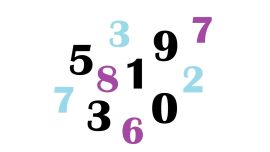The botched assassination attempt against Vice-President Crisinta Fernández de Kirchner was one of the best things that could’ve happened to Argentina’s relatively new “Super” Economy Minister Sergio Massa. Since taking office during the first days of August, the ex-Tigre mayor has managed to ease the levels of financial tension ever so slightly, but enough to be felt by most economic actors. The black market premium, probably one of the most significant gauges of fear in the economy, has broken decisively below 100 percent, but remains extremely elevated. Massa has managed to buy some time for Argentina’s economy for the first time since the whirlwind that began with Martín Guzmán’s resignation, and the brief tenure of Silvina Batakis at the Economy Ministry. This temporary calm is a necessary but insufficient condition to put the economy on a self-sustaining path, though the jury is still out as to whether Massa has the sufficient political weight and will to move in that direction – and even what that direction really is.
What do Máximo Kirchner and his followers in the La Cámpora youth political organisation really think about Massa’s current policy, which resembles Guzmán’s – only harder, better, faster, stronger, as the song goes? According to economist Emmanuel Álvarez Agis – who is close to key figures in the ruling Frente de Todos coalition, and who served Axel Kicillof’s deputy economy minister during the last two years of Cristina’s second mandate – “Massa’s austerity measures are eight times larger than Guzmán’s.” According to the economist (who refused to join this government), the current cut in subsidies amounts to 0.8 percent of GDP, compared to just a planned 0.1 percent under Joseph Stiglitz’s protégé.
Massa pulled off a massive PR stunt that confirmed his political expertise in his trip to the United States. He visited Washington DC, and oil capital Houston. He managed to secure a hearing with US Treasury Secretary Janet Yellen, who calls the shots at the International Monetary Fund, and advisor David Lipton, the man who originally signed off on Mauricio Macri’s record US$57-billion IMF bailout when the Fund official was the US representative at the multilateral institution. Beyond the Peronist obsession with photographs, Massa even beat Guzmán at his own game. The Columbia University economist had worked with Yellen’s husband, George Akerlof, who actually was part of the trio that was awarded the Nobel Prize for Economics along with Stiglitz and Michael Spence.
Massa also cozied up to the White House in a meeting with National Security Advisory Jake Sullivan, and even had time to make amends with Republicans, convincing Inter-American Development Bank chief Mauricio Claver-Carone to approve massive multilateral loans. The IDB official was appointed by Donald Trump much to the disgust of President Alberto Fernández, who had pushed hard for his own candidate, close ally Gustavo Beliz, to head the bank. Claver-Carone is an important figure among hawkish Cuban-US citizens along with Republican Senator for Florida Marco Rubio. He’s the one who revealed that Trump pressured Christine Lagarde and the IMF to approve the ginormous bailout in order to avoid a return of Kirchnerism to the corridors of power in Argentina.
Hardcore Kirchnerites, starting with Fernández de Kirchner, nearly called for Guzmán’s head on a pike, accusing him of being a neoliberal clothed in the skin of a Keynesian. Now, Massa has pushed a differentiated and more favourable exchange rate for soybean exporters, another key sector that functioned as an enemy of late former president Néstor and Cristina during her own 2007-2015 spell in office. The so-called “soy dollar” will be financed by the Central Bank and it allows exporters to sell at a differential peso-dollar exchange rate pegged at 200 pesos during September, compared to the official exchange rate which remains below 150 pesos. This segmented devaluation is so favourable for the supposed speculators and currency manipulators that they’ve sold US$3.2 billion worth in grains so far this month alone. The monopolists are basking in the glory.
So why is Massa allowed to do what Guzmán wasn’t? And furthermore, is Massa doing enough? Several economists from across the ideological spectrum believe Argentina needs a “stabilisation plan” to tackle inflation, which is the main issue affecting the economy. From Álvarez Agis to former Central Bank governor under Macri, Federico Sturzenegger, all the way back to Domingo Cavallo, everyone has agreed thjat the political situation wouldn’t allow such a thing, which would rest on an initial premise of aggressive deficit reduction. Sturzenegger compares the current situation to the dilemma former president Eduardo Duhalde faced in 2002, once the country had imploded after the end of the “convertibility” or “hard peg” between the peso and the dollar. Back then the interest rate stood at 100 percent, the economy had contracted 11 percent, the country had defaulted, and inflation had surged to 40 percent after a forced pesification. In just two months, and given a paralysed economy with costs and taxes indexed to inflation, a US$1.3-billion primary deficit turned into a surplus, achieving a fiscal surplus the following month and remaining in positive territory for some time. This unleashed a decade-long economic bonanza.
Is that possible? Potentially, but underlying macroeconomic imbalances must be attacked, starting with inflation, which clocked in at seven percent in August, a tad down on a month-to-month basis but at the highest level in at least 14 months annually: 78.5 percent. It will be difficult to steer clear of 100 percent this year. And it’s still not clear how Massa plans on taking inflation down to some 2.5 percent next October, during an electoral year, while being forced to violently cut the deficit.
Once again, an Argentine economy minister has bought some time. The economic and political price of the dollar-denominated loans he brought back from the United States, and the future cost of the “soy dollar” are all issues to be tackled in the future. For Massa, however, it’s an opportunity to come out on top, and to keep his dream of running for the presidency in 2023 (or at least to position himself for a challenge in 2027). Until things truly get better though, he’ll be happy to let Cristina and Macri take the stage.



















Comments